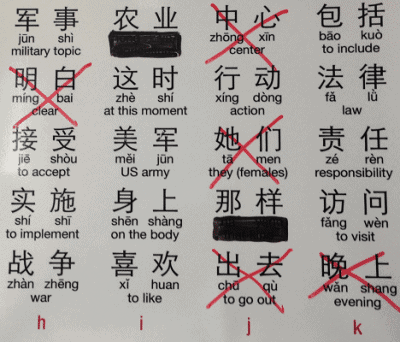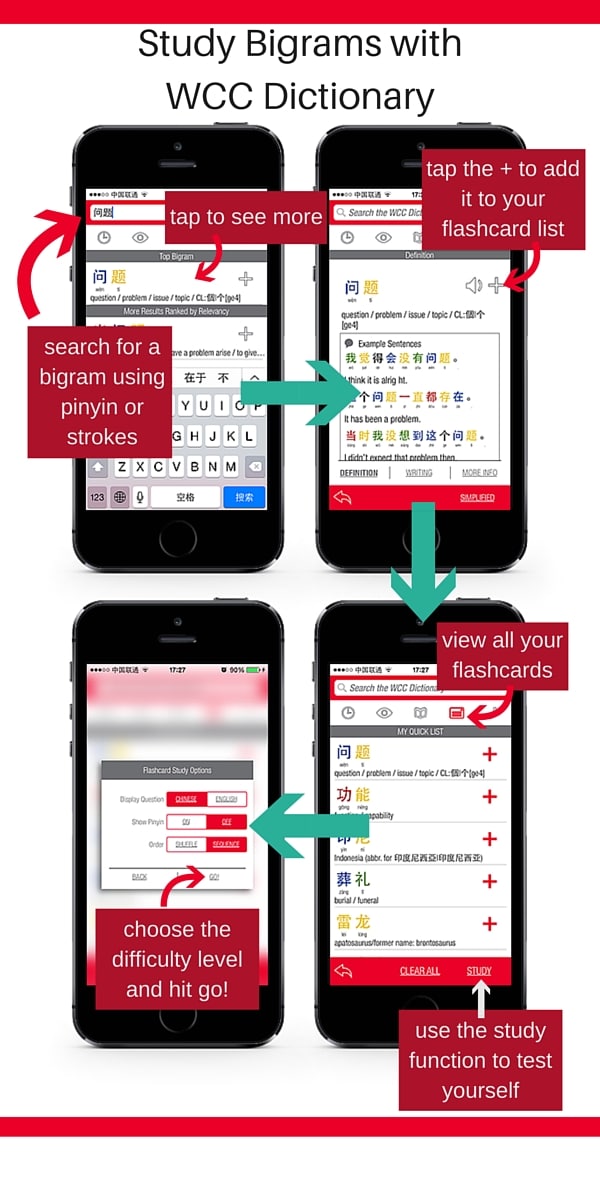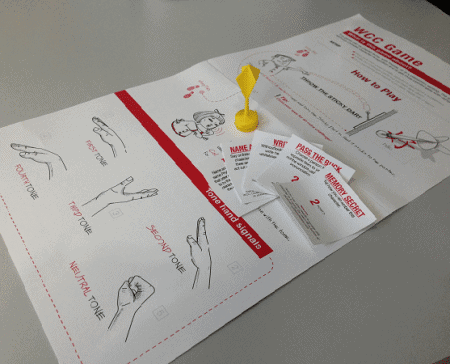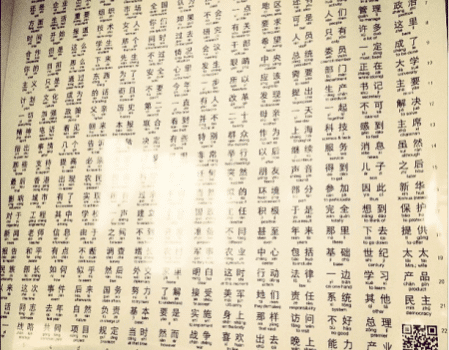Many of your have already purchased your Written Chinese Learning Poster, some of you have ordered several (Thanks to all of you!), some of you might be thinking about it and are not quite sure how to really utilize it.
Those of you who’ve already got one have probably come up with your own great methods (please share!) but I’ve also put together some ideas and tips that I’m personally using to enjoy and study with my poster.
Here are 5 tips for getting the most out of your Chinese learning poster:
1. Hide the pinyin and/or English
I recently put my bigrams poster up above my desk in the office and I sat and looked with pleasure at all those bigrams. I had taken my red board marker and crossed off the bigrams that I knew without a shadow of a doubt.
I began to look along the lines for the characters that I couldn’t read confidently and my eyes kept sneaking down past the bigrams to check out the pinyin underneath. I realised I would never be able to make the most out of this poster that I’d been looking forward to for weeks if I didn’t stop cheating. So, I took my black whiteboard marker and coloured over the pinyin. This was waaaay better, but now the English was my enemy, and that had to go as well!

TIP: A more obvious way to hide the pinyin and English translations would be to cover them with electrical or washi tape.
Ah, this was just what I needed to help me really test myself with those characters that were just on the perimeter of my memory! I didn’t cover all the characters, I still wanted to be able to see both the pinyin and English for those bigrams that were practically new to me. Occasionally, I would take a minute to look up from writing a blog post or answering emails to scan the poster for bigrams to learn.
2. Learn to write the characters with the WCC Dictionary
I also want to learn to write the bigrams and although I know the whole ‘heng’, ‘shu’, ‘pie’ ‘na’ routine, it’s always good to check the stroke order for each character you learn just in case.
So, I choose a bigram and open the WCC Dictionary app. Since I’m at my desk, I know I can use the online dictionary, but I also like trying to see if I already know how to write it by using the handwriting tool on my phone.
Oh by the way, if you don’t already have the Dictionary you can scan the QR code in the corner of the poster and it will take you to the download page where you can download it for iOS or Android.
There are several ways to find a bigram using the Dictionary app:
- You can do it my way by writing the strokes yourself to see if you can get the correct character.
- Type in the pinyin for the bigram.
e.g. if you’re looking for the bigram 能力 (néng lì) just type ‘neng li’ and the bigram will pop up as the first option.
- Type in the English meaning of the bigram (although this might bring up multiple options).
- Use the OCR tool by pressing the eye icon on the menu bar and scanning the characters. Hit ‘look’ up to see more details about the bigram.
Now you’ve found the bigram page, you can learn how to write the individual characters by clicking the ‘Writing’ button.
You’ll notice that you can also do the following:
- listen to how the bigram is pronounced
- view example sentences
- view the traditional characters
- see the radicals
- add them to your ‘Quick list’ flashcards (accessible by clicking the ‘letter’ icon in the menu).
3. Use the Character Flashcards Set in the WCC Dictionary
We have recently added 2 flashcard sets that you can use along side both the character posters. Just download the WCC Dictionary and go to flashcards. The flashcard sets are $4.99 but both have over 500 flashcards to study.
Alternatively, scan the QR code on your poster and go straight to the app from our Apps page.
The WCC Dictionary flashcard sets allow you to test blocks or a ‘loop’ of flashcards. You can adjust the loop length, but I just kept mine to the default of 10.
When I’m on my way to work on the metro or find myself with a few spare minutes, I can continue studying with the app. The flashcards in the app reflect my progress. So, for example, 建设 is still not crossed off on my poster, and so it’s still in my ‘loop’ in the bigrams app.

After getting the bigrams correct 4 times they are removed from my ‘loop’ and I can choose to cross them off my poster or not.
TIP: To avoid ‘recognising’ the characters because of the loop order, you can also set the flashcards to ‘shuffle’ in the settings menu.
4. Play Some Games

If we have visitors to the Written Chinese office we like to get them involved with our products and have them practice their Chinese with us.
With your poster you’ll receive a set of instructions and game cards as well a sticky dart to play some games with. Of course it’d be good to play with friends, classmates or colleagues, but you can play on your own too.
5. Use the digital poster as your computer desktop background
This great tip came from one of our users who bought the digital characters poster and sent us a picture! Since then, other users have done the same thing.
In order to use the poster as your background, you first need to change the PDF into an image file. There are some free services online that allow you to convert the file. I would personally suggest converting to a png file as the programme I used didn’t like jpeg.
Once you’ve got your image file, go into the settings on your computer and add the file as your background. On Windows you should be able to right click and ‘personalize’ your desktop. OS X users can go into ‘System Preferences’ and navigate to the ‘desktop’ icon OR you can hold down the ‘control’ button on your keyboard and click the desktop.
We hope that you enjoy using your Written Chinese Poster! If you have any ideas or tips on how you’re using your poster please share your ideas in the comments section below!
If you want one of our posters you can go to our Written Chinese Shop and get one there OR you can follow the links below!
The Official Written Chinese Learning Poster (Simplified Characters)
The Official Written Chinese Learning Poster (Traditional Characters)
The Official Written Chinese Bigrams Poster (Simplified Characters)
The Official Written Chinese Bigrams Poster (Traditional Characters)
The Official Written Chinese Bigrams Poster – 2nd edition (Simplified Characters – 323-644 Bigrams)
The Official Written Chinese Bigrams Poster – 2nd edition (Traditional Characters – 323-644 Bigrams)
